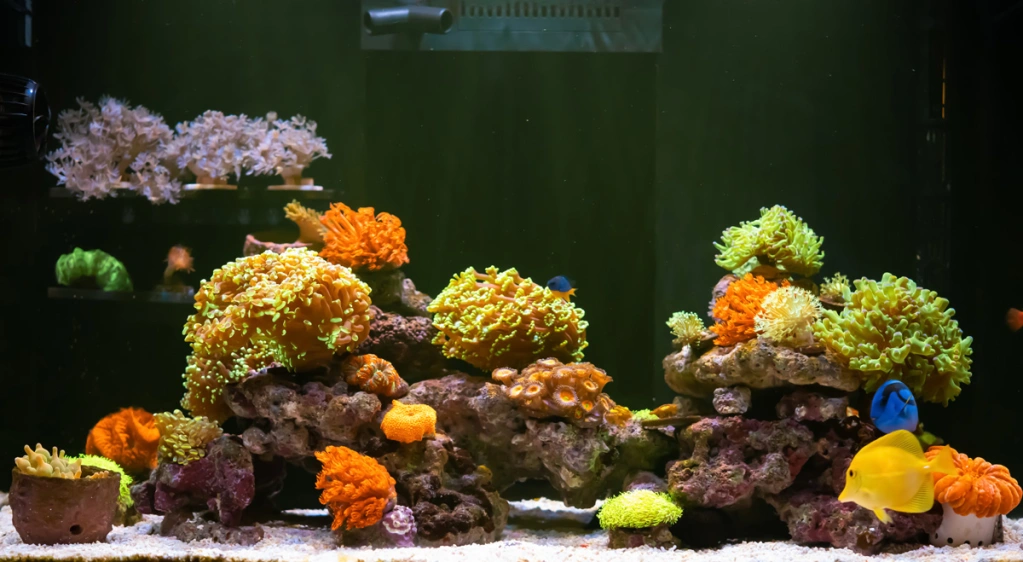So You Want Live Rock In Your Saltwater Aquarium?
Because they provide a habitat for your fish that is quite similar to the one they would find in nature, the live creatures that you purchase for your fish tank or aquarium are an excellent investment. It is possible for live rock to include organisms such as crabs, algae, worms, shellfish, and bacteria; all of these things will be transferred to your aquarium in order to create an ecosystem that is as realistic as it is possible to make it. The kind of living rock that is found in salt water is the one that is most likely to provide you with a diverse collection of creatures. The availability of saltwater aquarium live rock has simplified the maintenance of saltwater aquariums for many of us.
What are the Benefits of Live Rock?
- It performs the function of the principal filter for your aquarium. The appearance of live rock is identical to how it appears when it is out at sea or in the water; it has many small holes, nooks, and crannies, and is permeable. This suggests that any trash that is carried via the water will get trapped in the rock as it passes through. It’s possible that you may still need a filter designed specifically for your tank, but this initial stage in the filtering process is crucial due to the fact that living rock provides so many extra advantages.
- Because of the nature of the surface of live rock, it has a large amount of surface area. Both aerobic and anaerobic bacteria may flourish on this area’s surface thanks to its conducive conditions for development. This is a different manner in that it functions as a filter; it allows the natural development of many different types of bacteria that are beneficial. It is very necessary to have bacteria in order to convert ammonia into nitrates, which can subsequently be converted into nitrogen, which is a non-hazardous gas that may escape the tank via the water’s surface.
- Fish are really playful creatures. They have a wonderful play area to hide in provided by the aquarium living rock, which also serves as food. When they don’t want to be bothered, they have the option of withdrawing into the live rock for some peace and quiet.
- The live rock in your tank might be a source of nutrition for some species of saltwater fish as well as other types of invertebrates that you keep there. There is a possibility that the fish may swallow pieces of it; nevertheless, the living rock will also include little creatures that the fish can devour.
- The presence of live rock enhances the aesthetic appeal of a fish tank. In addition to the rock itself, the algae that develop on top of the rock is also quite beautiful to look at. When you have live rock in your tank, you will see a lot of pink and purple crystal-like algae growing on it.
- Once the live rock has been cured and placed in your aquarium, it will begin to produce new creatures. These are versatile and exciting additions that will bring more activity to your fish tank. It’s possible that you’ll spend more time looking at these new creatures than you would at your own fish.
- The addition of aquarium live rock will give your saltwater aquarium a more realistic appearance. You might compare it to an aquarium of fresh water that has a lot of vegetation in it.
How Much Live Rock Should You Put into Your tank?
The length of time required for the nitrogen cycle to complete itself in your water tank is directly proportional to the quantity of rock that you placed within your aquarium. In most cases, 1 pound of fish food per gallon of water is sufficient for a standard fish tank. It’s possible that you’ll need a little bit extra if you don’t already have an aquarium filter. It is strongly suggested that you invest in a filter despite the fact that “live rock is intended to exist in a much more prolonged setting where there is a lot of opportunity for natural filtering to take place.” A typical aquarium has a rather restricted amount of space, therefore waste has a propensity to accumulate pretty rapidly. This trash may be too much for the living rock in your environment to process.
Increasing the number of fish in the aquarium will likely result in an increase in the amount of waste produced, and there is a maximum quantity of aquarium live rock that may be added without squeezing your fish out. If you have a small number of fish in your aquarium and choose to utilize live rock as a filter, you will need to monitor the quality of the water in your tank on a regular basis.
You want to have the finest possible experience with your water tank if at all feasible. This means ensuring that your fish are always in good health and working hard to keep your aquarium in pristine condition. Your experience will definitely be improved by the addition of aquarium live rock.

